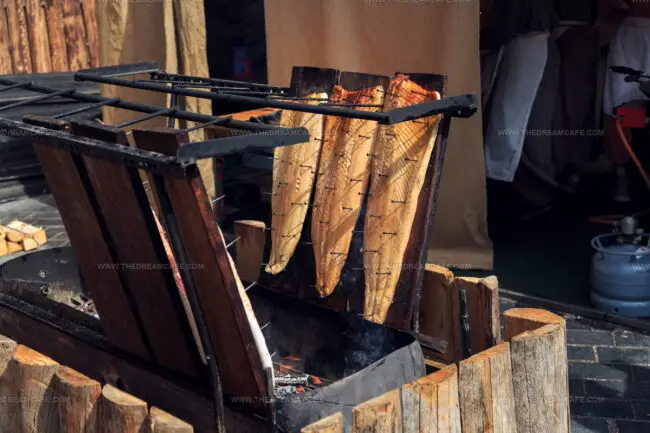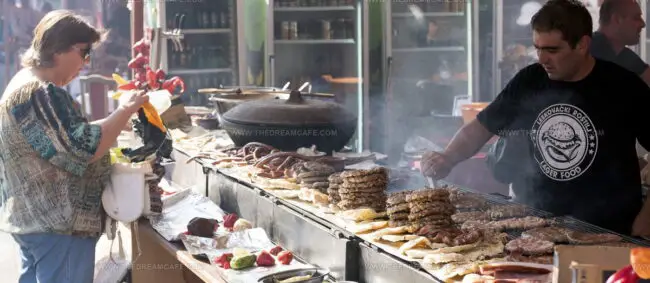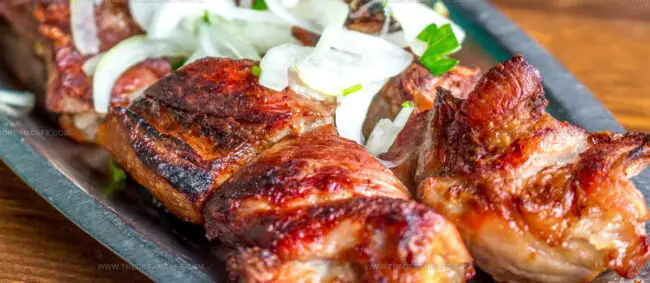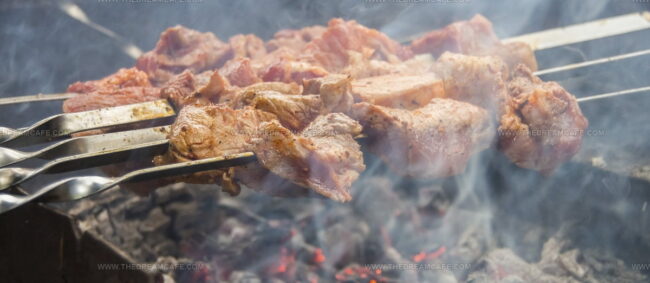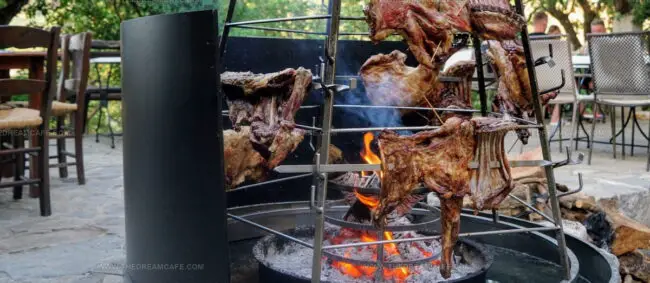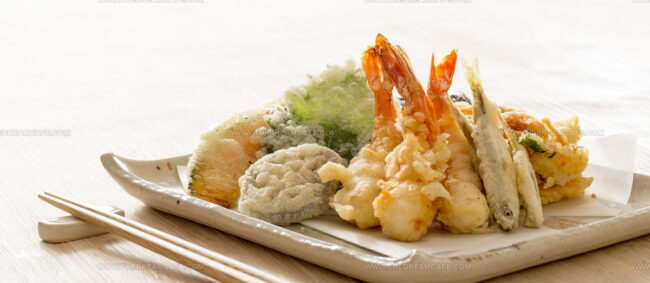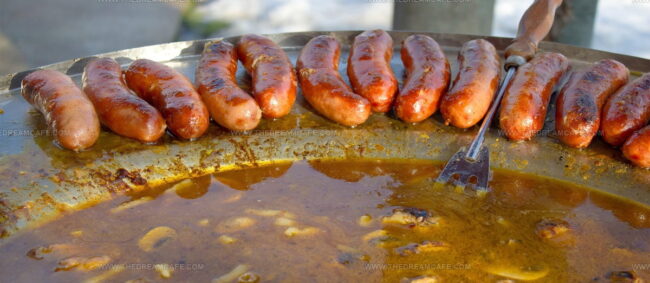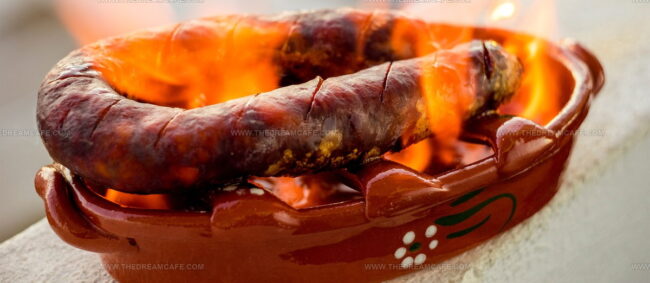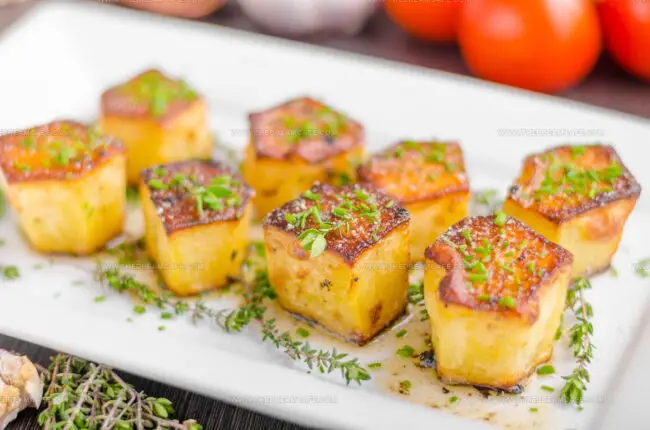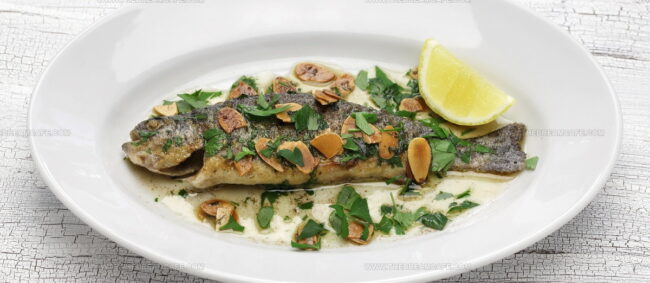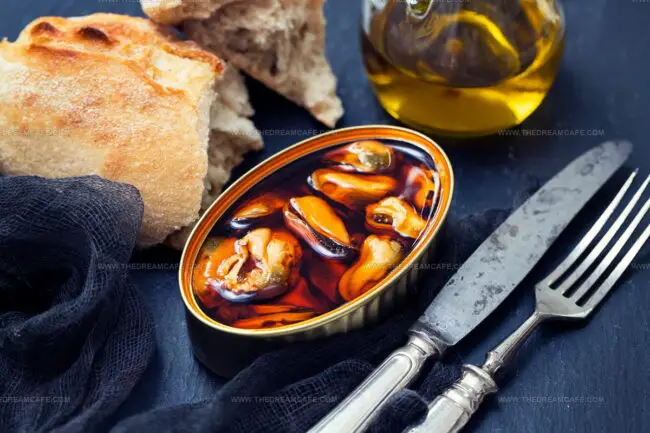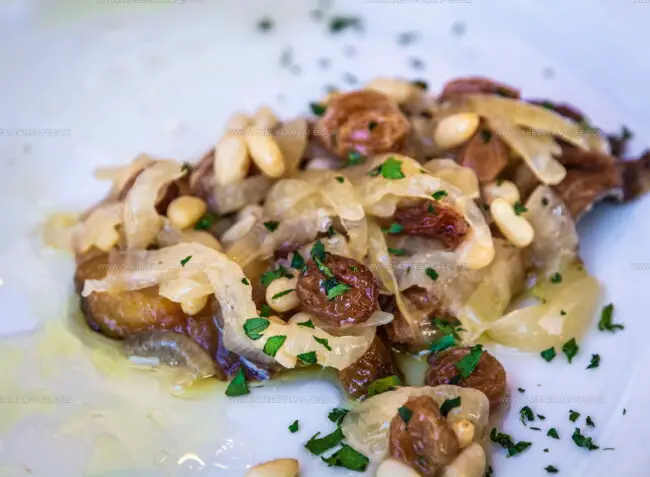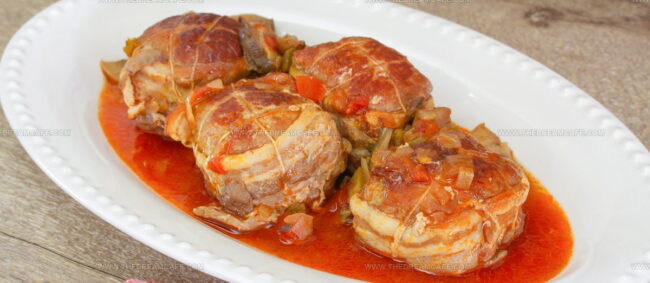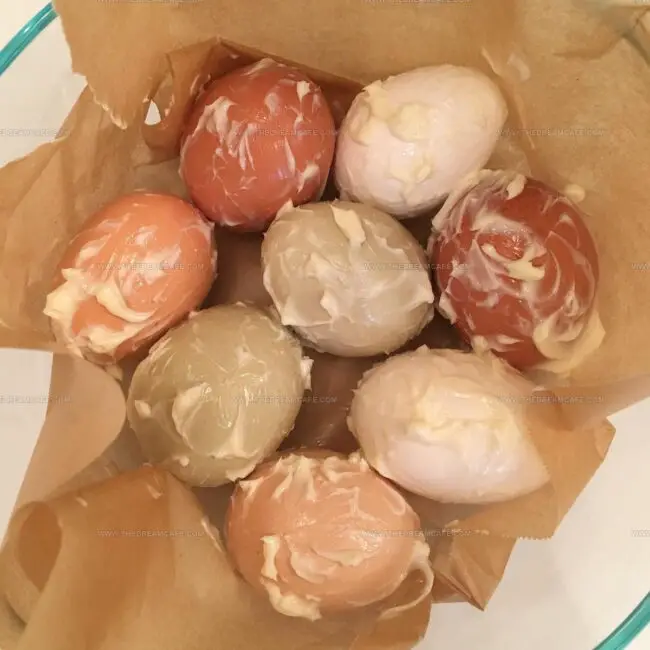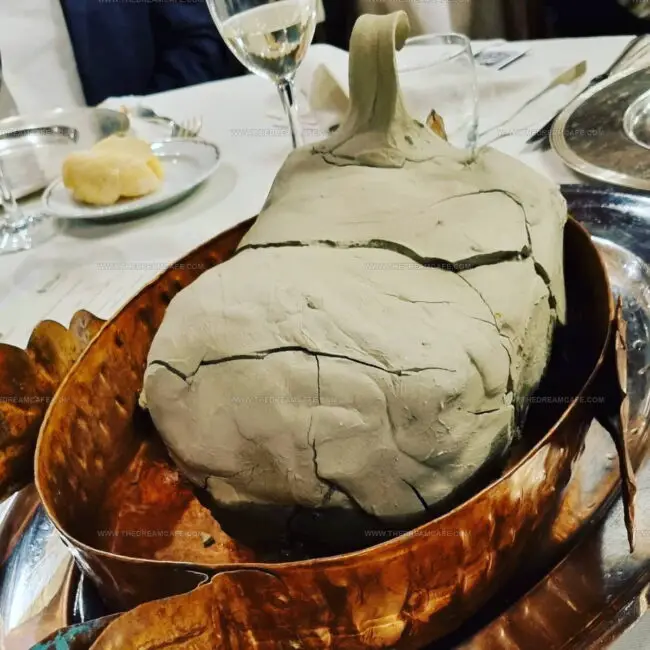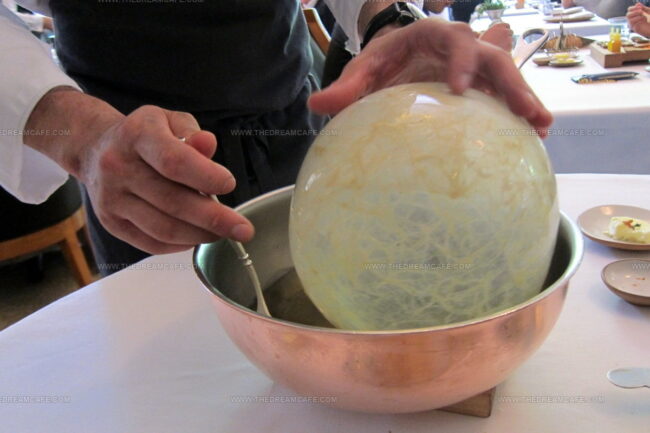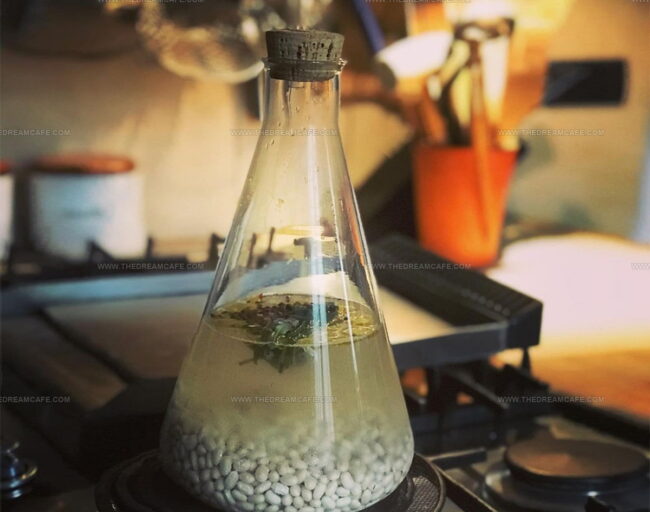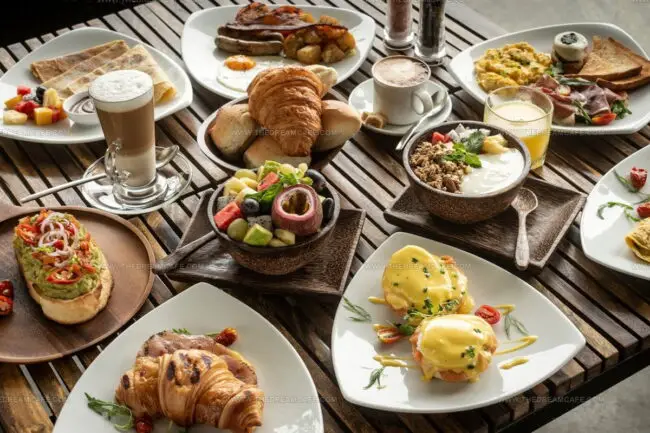29 Fascinating European Cooking Techniques to Master
European cooking techniques have revolutionized culinary artistry through centuries of refined methods and passionate innovation.
Passionate chefs across diverse regions developed intricate approaches that transformed raw ingredients into extraordinary gastronomic experiences.
Generations of culinary masters carefully cultivated sophisticated skills passed down through familial traditions and professional training.
Regional landscapes, agricultural practices, and cultural influences shaped these remarkable cooking strategies that continue to inspire modern kitchens worldwide.
Professional techniques emerged from intimate understanding of ingredients, precise temperature control, and meticulous preparation processes.
Generations of expertise converged to create nuanced methods that elevate simple ingredients into extraordinary dishes.
Each technique represents a delicate balance between technical precision and creative expression, reflecting deep cultural connections to food preparation.
You are about to uncover 29 legendary European cooking techniques that will transform your understanding of culinary excellence:
Legendary European Cooking Techniques Every Foodie Should Know
Europe’s legendary kitchens are built on a foundation of time-honored techniques, braising, baking, roasting, and more. Unlock secrets that make every dish sing with tradition.
Loimulohi
Loimulohi represents a centuries-old Finnish fire-roasting technique that transforms fresh salmon or rainbow trout into a smoky delicacy by vertically grilling the fish on a wooden plank over open flames.
Scandinavian fishermen traditionally used this method to infuse rich, intense flavors into their catch while preserving its natural moisture and texture.
Sea salt and aromatic ingredients like lemon juice, honey, or juniper berries enhance the fish's taste before roasting.
Fire proximity determines cooking duration, creating a unique smoky profile that separates this technique from standard grilling methods.
Nordic cultures have perfected this outdoor cooking approach over generations, making it a staple of wilderness cuisine.
Wood planks not only impart additional flavor but also prevent the delicate fish from falling into the fire.
Chefs and home cooks alike appreciate the rustic, primal cooking experience this method provides.
Loimulohi delivers an authentic taste of Finland's culinary heritage with each smoky, tender bite.
Shashlik
Shashlik are succulent skewered meats grilled over open flames, originating from Central and West Asian culinary traditions.
Marinated overnight in vinegar, herbs, and dry wine, these barbecue delicacies typically feature lamb, beef, or pork based on regional preferences.
Russian culture considers grilling a masculine activity, with men handling the entire cooking process while women prepare vegetables and set tables.
Chunks of meat are often combined with bell peppers, onions, mushrooms, or tomatoes for added flavor and texture.
Religious and cultural differences influence meat selection across various regions.
Skilled grill masters carefully select marinades to enhance meat tenderness and taste.
Open-fire cooking techniques ensure a smoky, robust flavor profile.
Traditional preparation methods have been passed down through generations, maintaining authentic cooking principles.
Leskovacki Rostilj
Leskovacki rostilj is Serbia's supreme barbecue art, a grilling technique perfected in Leskovac that transforms ground beef into an extraordinary culinary experience.
Rooted in centuries-old traditions traced from the Caucasus through Turkey, Greece, and Macedonia, this technique represents a secret method passed down through generations of local grill masters.
Serbian chefs carefully chop and grind beef, blending it with precise seasonings and allowing the mixture to rest for two days before grilling.
Meat preparation involves a meticulous process of first coarsely grinding, then finely processing the beef to ensure optimal texture and flavor.
Regional barbecue experts consider this technique a pinnacle of meat preparation, reflecting deep cultural pride in Serbian cuisine.
Barbecue enthusiasts celebrate the complex flavors and traditional techniques that make Leskovacki rostilj unique.
Each step of preparation contributes to the dish's rich, intense taste profile.
Mtsvadi
Mtsvadi are succulent Georgian meat skewers grilled over open flames, capturing the essence of outdoor barbecue traditions.
Georgians prepare this dish using pork, mutton, or veal marinated in a zesty blend of lemon and pomegranate juice with aromatic tarragon, salt, and pepper.
Tender meat chunks are carefully threaded onto metal skewers and cooked until perfectly charred and juicy.
Fire-grilling imparts a smoky flavor that elevates the meat's natural richness.
Raw onion rings, sliced tomatoes, and pomegranate seeds accompany the dish as fresh, vibrant garnishes.
Tkemali plum sauce adds a tangy complement to the grilled meat.
Mtsvadi represents a cherished social dining experience that brings friends and family together around an open fire.
Khorovats
Khorovats are Armenia's signature grilled meat skewers featuring a distinct communal cooking tradition centered on mangal grills where friends and neighbors gather to prepare succulent pork chops and ribs.
Armenians carefully select premium meat cuts and season them minimally with salt and pepper, avoiding vinegar-based marinades that could compromise natural flavors.
Skilled grill masters thread meat onto traditional metal shampoors and cook over hot coals, creating smoky, tender results.
Traditional preparation involves short marinating times to preserve meat's authentic taste.
Social connections matter as much as cooking technique, with grilling often becoming a community event.
Marinades typically include onions, herbs, and occasional spices to enhance meat's inherent qualities.
Khorovats symbolizes Armenian hospitality and culinary heritage, transforming simple ingredients into a memorable shared meal.
Antikristo
Antikristo is a Cretan meat-roasting technique that transforms lamb into a succulent, salt-infused delicacy by slow-cooking it around an open fire.
Shepherds developed this ancient method to cook entire animal pieces using wooden skewers arranged in a circular formation around flames.
Wind direction and fire intensity carefully guide meat placement to ensure even cooking.
Four main pieces of young lamb or occasional goat receive a simple salt seasoning before roasting.
Meat cooks directly from flame heat without touching coals, allowing natural fat to enhance flavor and tenderness.
Salt and fire work together to create a uniquely crispy exterior while maintaining juicy interior meat.
Greek islanders have practiced this technique for generations, preserving a traditional cooking style that celebrates simplicity and natural ingredients.
Gratin
Gratin is a classic French cooking method that transforms simple ingredients into a golden-crusted, irresistible dish by topping them with breadcrumbs, cheese, or cream and baking until the surface becomes deliciously crispy.
Dating back to the 16th century, the term originally described the scrumptious burnt bits stuck to cooking pans that resourceful cooks would carefully scrape off.
Bakers create this technique by either baking dishes uncovered in a hot oven or quickly browning the surface under a broiler.
Cream, grated cheese, and breadcrumbs form the traditional gratin topping, which adds texture and rich flavor.
Modern variations include vegetable, potato, and seafood gratins that showcase the method's versatility.
Professional and home kitchens alike embrace this technique for its ability to elevate simple ingredients.
French cuisine continues to inspire global culinary traditions through this delectable preparation method.
Sac
Sac peka represents a traditional Balkan cooking method using a bell-shaped metal or clay dome where meats, vegetables, and seafood slowly roast under hot embers, sealing incredible flavors and aromas within the cooking vessel.
Mediterranean ingredients like olive oil, herbs, and occasional wine enhance the dish's rich profile.
Croatian, Bosnian, and Serbian families traditionally used this ancient technique for preparing multiple dishes beyond meats, including breads and pastries.
Outdoor fireplace cooking ensures even heat distribution and minimal moisture loss during preparation.
Fire-covered lids trap steam and heat, creating tender and juicy results.
Regional cooks carefully layer ingredients inside the dome-shaped vessel before covering with hot coals.
Salt, pepper, and local herbs provide additional seasoning complexity.
Slow cooking transforms simple ingredients into deeply flavorful meals that connect generations through traditional culinary practices.
Gradele
Gradele is a traditional Croatian coastal grilling method that transforms fresh seafood into a succulent culinary experience over an open fire.
Dalmatian summers come alive with this simple yet profound cooking technique using a metal grate to prepare fish, meat, or snails with remarkable precision.
Fishermen and home cooks brush the protein with rosemary-infused olive oil, ensuring each piece remains perfectly juicy and flavorful.
Small or large fish cook with their heads intact, capturing the essence of Mediterranean cooking traditions.
Olive oil, parsley, and garlic create a classic accompanying sauce that elevates the grilled protein.
Boiled potatoes or blanched swiss chard typically complete this rustic meal.
Beyond a cooking method, gradele represents more than just food preparation—it embodies a relaxed summer lifestyle.
Regional ingredients and open-fire techniques transform simple ingredients into an unforgettable dining experience.
Tempura
Tempura are delicate Japanese deep-fried seafood and vegetable dishes featuring a crisp, light batter that highlights fresh ingredients without overwhelming their natural flavors.
Portuguese Jesuit missionaries likely introduced the cooking technique to Japan during the 16th century, inspiring a culinary tradition that transformed simple ingredients into elegant fare.
Shrimp, scallops, squid, and small crabs represent ideal protein selections for the dish, while vegetables like shiitake mushrooms, asparagus, Japanese eggplant, and snow peas provide excellent alternatives.
Master chefs carefully mix flour, eggs, and water to create a precise batter that ensures maximum crispness and minimal oil absorption.
Tempura requires rapid frying at high temperatures to maintain ingredient integrity and prevent excessive greasiness.
Restaurants typically serve tempura with a gentle dipping sauce that complements the light, airy coating.
Quality ingredients and precise cooking technique determine the dish's success.
Japanese restaurants consider tempura a sophisticated yet accessible menu item that showcases culinary precision.
Cataplana
Cataplana are traditional Portuguese seafood and meat stews uniquely cooked in a distinctive copper clam-shaped pan that seals in flavors and moisture.
Originally from Algarve's Faro region, this culinary technique transforms fresh ingredients like fish, shellfish, pork, and vegetables into a rich, aromatic meal.
Fishermen first developed this cooking method to create hearty one-pot meals during long fishing expeditions.
Portuguese families continue the tradition by preparing cataplana for special gatherings and weekend meals.
Classic versions often include succulent shrimp, tender clams, spicy sausage, and aromatic herbs.
Olive oil, white wine, and tomatoes typically form the base of this deeply flavorful dish.
Restaurants across Portugal proudly serve cataplana as a celebration of regional maritime cooking techniques.
Kotlovina
Kotlovina are hearty meat and vegetable stews cooked in large shallow pans over open fires across Croatia's rural landscapes.
Croatian families gather outdoors to prepare this rustic dish featuring mixed meats like pork, beef, and sausages slowly roasted with seasonal vegetables.
Each kotlovina combines carefully selected meats seasoned with simple spices like salt and pepper.
Outdoor cooking creates smoky flavors that enhance the dish's robust character.
Hunters and farmers traditionally prepared kotlovina during social gatherings and celebrations.
Families and friends enjoy this communal cooking experience that connects generations through shared meals.
Cooking techniques and ingredient selections reflect specific Croatian regional culinary identities.
En Papillote
En papillote is a delicate French cooking technique that seals ingredients inside paper packets, creating an aromatic steaming environment that intensifies flavors and preserves nutrients.
Steam trapped within the paper packet naturally cooks ingredients like seafood, vegetables, and poultry while keeping them exceptionally moist and tender.
Professional chefs prefer parchment paper but also use aluminum foil or paper bags for this method.
Cooking can occur in ovens, steamers, metal plates, or grills.
Seafood and vegetables typically yield the most impressive results when prepared en papillote.
Mediterranean and French cuisines frequently employ this technique for elegant, health-conscious meals.
Delicate ingredients like fish, herbs, and light proteins benefit most from this gentle, moisture-rich cooking approach.
This method ensures maximum flavor retention without added fats or oils.
Buzara
Buzara is a traditional Croatian seafood cooking technique that transforms fresh marine catches into a spectacularly aromatic dish bathed in a rich wine-based sauce.
Olive oil, garlic, and fresh parsley create an intensely flavorful base that captures Mediterranean coastal essence.
Scampi and mussels represent the most popular seafood choices, though chefs also prepare clams, prawns, lobsters, and small fish using this method.
Two primary styles exist: white buzara made with white wine and red buzara incorporating fresh tomatoes or tomato sauce.
Coastal Croatian regions particularly favor this straightforward yet elegant preparation technique.
Chourico Assado
Chourico assado is a fiery Portuguese grilling method that transforms traditional pork sausage into a spectacle of flame and flavor.
Portuguese culinary experts ignite aguardente, a potent local spirit, in a boat-shaped terracotta bowl called an assador.
Flames dance beneath the sausage, creating a crisp exterior and smoky essence that delights diners.
Rich pork sausage slowly roasts over the burning spirit, developing deep caramelized edges and intense taste.
Regional restaurants and home cooks often prepare this dramatic dish as a social centerpiece during gatherings.
Guests watch in excitement as the sausage sizzles and chars over open flames.
Regional traditions transform this simple sausage into an unforgettable gastronomic experience.
Pommes Fondantes
Pommes fondantes are exquisite French potato preparations where new potatoes transform into golden-crusted, butter-infused delicacies with supremely creamy interiors.
Classic French kitchens treasure this technique of carefully browning whole potatoes in rich butter and savory stock until perfectly tender.
Carefully selected new potatoes work best for achieving maximum softness and flavor absorption.
Chefs meticulously scrape, wash, and dry each potato before gently browning them in butter.
Cooking occurs slowly in a combination of butter and chicken or beef stock, ensuring even heat distribution.
Margarine must never substitute butter, as it creates undesirable burning and sediment.
Proper preparation guarantees a crisp exterior that contrasts beautifully with an impossibly smooth inner texture.
Restaurant professionals consider these potatoes a sophisticated side dish that elevates any main course.
Fatanyeros
Fatanyeros reveals Hungary's rustic outdoor grilling tradition combining multiple meat types on a wooden platter.
Hungarian grill masters carefully select premium pork, beef, and veal cuts for this robust meat feast.
Fire-roasted meats get expertly seasoned and slow-cooked over open flames to enhance natural flavors.
Crispy bacon slices accompany the grilled meat selections, adding rich smoky notes to each bite.
Fresh green vegetables provide a light contrast to the hearty protein centerpiece.
Diners enjoy this classic dish as a communal meal that celebrates traditional Hungarian cooking methods.
Side french fries complete the plate, offering a crispy complement to the tender, juicy meats.
Wooden platters serve as both functional serving surfaces and authentic presentation elements that connect eaters to Hungary's rural culinary heritage.
Rosvopaisti
Rosvopaisti are traditional Finnish slow-roasted meat dishes prepared in underground pit ovens, originating from ancient hunting and preservation techniques.
Shepherds and hunters developed this cooking method to prepare large game meats like lamb, calf, pork, beef, mutton, bear, or reindeer.
Workers would dig deep earth pits lined with heat-retaining bricks or rocks and build intense fires to create hot cooking chambers.
Marinated meat and vegetables wrapped tightly in foil get placed deep inside these smoldering pits.
Cooking processes typically require 8-12 hours of careful temperature management and slow roasting.
Heat radiates evenly around wrapped ingredients, creating tender, richly flavored meats infused with smoky earthen notes.
Finnish wilderness communities traditionally prepared rosvopaisti during late afternoon gatherings as communal feasts celebrating successful hunts or harvests.
Meuniere
Meuniere is a classic French cooking method featuring fish delicately coated in flour and gently sautéed in rich, golden butter.
Originating from traditional French kitchens, this technique transforms simple white fish into an elegant, flavorful dish with a crispy exterior and tender interior.
French chefs carefully dust fish fillets in flour before browning them in butter until they reach a perfect golden color.
Lemon juice and fresh parsley are classic finishing touches that brighten the fish's rich flavor.
French cuisine celebrates this simple yet sophisticated method as a testament to culinary elegance.
Mejillones En Escabeche
Mejillones en escabeche are pickled Spanish mussels preserved in a zesty marinade of vinegar, olive oil, white wine, and aromatic spices.
Spanish coastal regions pioneered this preservation technique centuries ago to extend seafood shelf life and enhance flavor.
Marinades typically include onions, garlic, bay leaves, peppercorns, and paprika, which infuse the mussels with complex Mediterranean tastes.
Locals often enjoy these tangy mussels as a tapas appetizer or quick protein-rich snack.
Marinating takes several hours to allow flavors to penetrate the tender shellfish.
Commercial versions come packaged in small tin cans for convenient consumption.
You can find these pickled mussels in markets throughout Spain and increasingly in international gourmet shops.
Skewers (Raznjici)
Raznjici are succulent grilled meat skewers originating from Balkan countries like Serbia, Croatia, Bosnia and Herzegovina, and Montenegro.
Meat chunks—typically pork, chicken, beef, or lamb—are carefully marinated in a flavorful blend of herbs, spices, garlic, and occasional vinegar or lemon juice.
Skewers are traditionally prepared by threading marinated meat pieces onto wooden sticks before grilling over open flames.
Serbian and Croatian cooks often season the meat with robust spice combinations that create complex taste profiles.
These popular street foods and barbecue staples require careful preparation and precise grilling to ensure maximum tenderness.
Each skewer represents a delicious example of Balkan culinary traditions passed through generations.
Saor
Sarde in saor are a classic Venetian seafood dish that transforms simple sardines into a complex, sweet-and-sour delicacy through a centuries-old preservation method.
Fishermen originally developed this technique to keep sardines edible during long sea voyages by frying fresh fish and marinating them in a tangy mixture of white wine, vinegar, and caramelized onions.
White Chioggia onions form the dish's flavor base, slowly cooked until golden and sweet.
Pine nuts and raisins add textural contrast and subtle sweetness to the marinade.
Fresh sardines are quickly fried until crisp and then layered with the aromatic onion mixture.
Salt, pepper, and olive oil enhance the ingredients' natural flavors.
Venetian sailors perfected this method to ensure protein remained edible during extended maritime journeys, transforming a practical preservation technique into a beloved regional specialty.
Escabeche
Escabeche are tangy seafood or meat dishes marinated in a zesty vinegar-based sauce that originated in Spain and spread across global cuisines.
Spanish colonizers introduced this preservation technique to regions like Guam, where locals adapted it primarily for fish preparations.
Mediterranean and Latin American cultures embrace escabeche as a delicious method of extending food storage through acidic marinades.
Fish or meat get quickly fried or poached before being immersed in a vibrant sauce of vinegar, herbs, and spices.
Onions play a crucial role in adding depth and complexity to the marinade's flavor profile.
Europeans initially developed this technique as a practical way to prevent food spoilage in warm climates.
Modern chefs continue to celebrate escabeche as a versatile and flavorful culinary technique that balances acidity, spice, and protein.
Paupiette
Paupiettes are elegant French rolled meat parcels featuring thin meat slices carefully wrapped around savory fillings of herbs, vegetables, and occasional breadcrumbs.
French kitchens traditionally prepare these delicate meat rolls using veal, beef, or chicken as primary protein bases.
Skilled cooks carefully pound meat into thin, uniform sheets before adding carefully selected interior ingredients.
Seasoned herbs and finely chopped vegetables create rich flavor profiles inside each compact meat bundle.
Braising or baking methods help tenderize the meat while intensifying internal flavors.
Experienced home cooks often serve paupiettes with complementary sauces or vegetable accompaniments.
Restaurants frequently present these protein packages as sophisticated main course options for discerning diners.
Burrida (Sardinia)
Burrida is a traditional Sardinian seafood dish featuring tender fish simmered in a savory vegetable broth and finished with a rich, nutty sauce.
Cagliari locals prepare this classic recipe using skate, smooth hound shark, or dogfish as the primary protein.
Chefs carefully slice firm-fleshed fish and simmer it with celery, carrot, onion, and lemon to develop deep flavors.
Olive oil-cooked garlic forms the base of an aromatic sauce blended with walnuts or pine nuts, fresh parsley, and tangy vinegar.
Sardinian fishermen have long used this cooking method to transform fresh catch into a memorable meal.
Mediterranean culinary traditions shine through this simple yet sophisticated preparation.
Coastal regions celebrate burrida as a testament to their seafaring heritage.
Families often gather to enjoy this rustic, flavorful dish that connects them to generations of maritime cooking.
Buttered Eggs
Buttered eggs are a traditional Irish preservation method from Cork that transforms fresh, warm eggs into a uniquely flavored delicacy.
Farmers carefully rub a thin layer of butter around freshly laid eggs directly from hens.
This technique creates an airtight seal that prevents bacterial growth and allows eggs to remain edible for several months.
Cork's rural communities developed this method to extend egg storage during times of limited refrigeration.
Butter acts as a protective coating that seals the egg's porous shell and infuses a subtle, rich flavor.
Salt sometimes enhances the preservation process.
Professional Irish farmers continue this generations-old technique to maintain egg quality and taste.
Alla Creta
Alla creta is a dramatic Greek cooking method that seals seasoned whole birds inside thick clay shells before baking them to tender perfection.
Clay envelops the entire bird, creating a unique sealed environment that locks in natural juices and intense flavors.
Ancient Greek and Mediterranean cultures developed this technique to preserve meat's moisture and enhance its taste.
Bakers carefully mold clay around seasoned guinea fowl or other poultry, ensuring complete coverage.
Heat transforms the clay into a hard protective crust during baking.
Skilled cooks crack open the hardened clay shell with a hammer once cooking completes.
Rich, succulent meat emerges from its clay cocoon, revealing perfectly cooked tender flesh.
Mediterranean culinary traditions have preserved this extraordinary cooking technique for generations.
En Vessie
En vessie is a traditional French culinary method where meats are sealed inside animal bladders to preserve moisture and intensify flavors during cooking.
Originating in classic French gastronomy, this technique transforms poultry and meats by creating an airtight seal that prevents moisture loss and concentrates natural juices.
Bresse chicken prepared en vessie represents a pinnacle of this method, where premium fowl gets stuffed with luxurious ingredients like foie gras, black truffles, and white wine.
Chefs carefully select a pig or chicken bladder to completely encase the meat before gentle steaming.
Bladder walls act as a natural membrane that traps steam and prevents direct heat contact.
This cooking approach ensures extraordinarily tender and succulent results with concentrated flavor profiles.
Historical records suggest the technique dates back to medieval French cooking traditions.
Professional kitchens continue to use this method for creating extraordinarily refined protein dishes with exceptional texture and taste.
Fagioli Al Fiasco
Fagioli al fiasco are rustic Tuscan bean dishes slow-cooked inside traditional Chianti wine bottles, representing a unique culinary tradition passed down through generations.
Cannellini beans simmer with olive oil, garlic, sage, and chili peppers, creating a rich and aromatic meal that reflects Tuscany's simple yet flavorful cuisine.
Historically, Tuscan families would place these bottles near fireplace embers, allowing beans to cook gently overnight, infusing them with deep, complex flavors.
Modern home cooks still occasionally prepare this dish using traditional methods, though less frequently than in past decades.
Tomatoes are often added to the mixture, except in Florence's strict interpretation of the recipe.
Olive oil and herbs contribute significant depth to the beans' taste profile.
Serving options include enjoying the beans directly or spooning them over crusty toasted bread.
Wine bottles transform into unique cooking vessels, preserving an ingenious method of preparing hearty, comforting meals.
What Makes European Techniques Different From Asian or American Cooking?
European cooking techniques often emphasize classic methods developed over centuries, focusing on layering flavors, precise preparations, and balancing richness with subtlety.
Techniques like sautéing, braising, roasting, and baking are foundational, often involving slow cooking and careful sauce-making.
European cuisine tends to highlight the natural qualities of high-quality ingredients, with sauces and stocks playing a central role.
In contrast, Asian cooking frequently prioritizes high-heat stir-frying, steaming, and quick marinating, emphasizing bold, fresh, and sometimes spicy flavors with a focus on texture contrasts.
American cooking is incredibly diverse but often highlights grilling, smoking, and fusion techniques, blending flavors from multiple cultures with an emphasis on boldness and innovation.
What Tools Are Commonly Used in Traditional European Cooking?
Traditional European kitchens typically use a range of specialized tools that support their classic cooking methods, including:
These tools facilitate the meticulous techniques that define European cooking’s elegance and depth.

